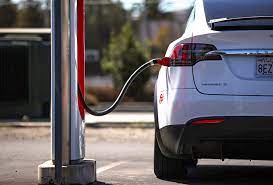While it may have taken trillions of dollars in government subsidies and the suspension of most logic and critical thinking about how EV batteries are made and the power used to charge such vehicles, EVs have still hit a milestone.
Sales globally now make up 10% about the global market of auto sales, according to a new report from the Wall Street Journal. The global growth has been helped along by massive adoption in places like China and Europe, while sales in the U.S. still lag.
Data from LMC Automotive and EV-Volumes.com confirms that global sales of EVs were about 7.8 million units last year, up 68% from the year prior.
Ralf Brandstätter, the head of Volkswagen AG’s China business, told the WSJ that China has really helped drive the change: “Last year, every fourth vehicle we sold in China was a plug-in, and this year it will be every third auto. We haven’t reached the tipping point yet, but we’re expecting to get there between 2025 and 2030.”
EVs made up 11% of total sales in Europe and 19% of total sales in China, the report says. 807,180 fully electric vehicles were sold in the U.S. last year, accounting for 5.8% of all vehicles sold. This number is up from 3.2% the year prior and was helped along by Tesla being the world’s most dominant EV maker, WSJ notes.
Electric vehicles accounted for 25% of new vehicle production in Germany last year and, in December, the country sold more EVs than conventional vehicles as customers rushed to cash in on government incentives before they were cut heading into 2023. BMW even saw sales of EVs rise when overall vehicles sales were down last year. EV sales “more than doubled” despite total sales being down 5%.
VW saw a similar trend: new car sales fell 7% to 8.3 million on the year, but electric vehicle sales were up 26% over the same period. Ford and Mercedes also saw their EV sales “more than double” last year.
BMW sales chief Pieter Nota commented: “We are confident that we can repeat this success next year, because we have a continued high order backlog for fully electric models.”
But just because some subsidies are ending doesn’t mean that EV pricing is going to move higher in the new year. A lot of the pricing power that auto companies had due to the robust economy and supply chain holdups has now worked its way out of the system. This, combined with continued advancements in EV technology, may help to keep prices steady – or in the case of Tesla, maybe even move them lower than last year.
Peter Fuss, an auto analyst with Ernst & Young, concluded: “Demand is likely to weaken in the coming year. The weak economy will cause retail and business consumers to be more reluctant. And it is possible that supply will outpace demand and we will begin to see discounts again.”

 Iran Energy News Oil, Gas, Petrochemical and Energy Field Specialized Channel
Iran Energy News Oil, Gas, Petrochemical and Energy Field Specialized Channel



